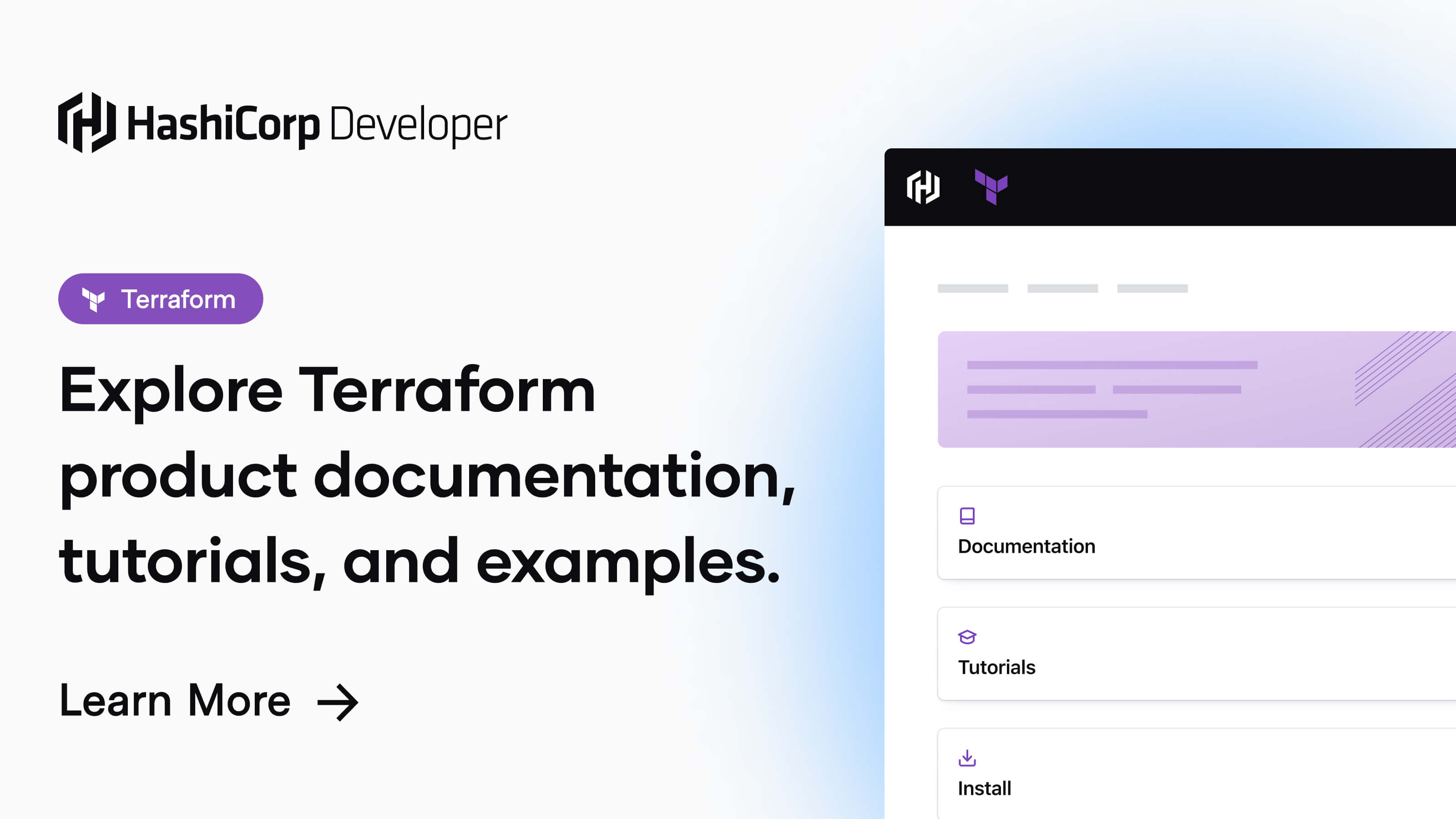Managing Multiple Kubernetes Clusters with Terraform
Learn best practices and techniques for managing multiple Kubernetes clusters efficiently and consistently using Terraform.
Learn best practices and techniques for managing multiple Kubernetes clusters efficiently and consistently using Terraform.
To manage multiple Kubernetes clusters with Terraform, you can use provider aliases. This allows you to define multiple Kubernetes providers, each configured for a different cluster, and then reference the appropriate provider when defining your Kubernetes resources.
To manage multiple Kubernetes clusters with Terraform, you can use provider aliases.
Define multiple providers:
provider "kubernetes" {
alias = "cluster1"
# Cluster 1 config
}
provider "kubernetes" {
alias = "cluster2"
# Cluster 2 config
}Reference providers in resources:
resource "kubernetes_deployment" "example" {
provider = kubernetes.cluster1
# ...
}This lets you organize and deploy resources to different clusters within the same Terraform project.
This Terraform code demonstrates managing two Kubernetes clusters by defining two Kubernetes providers with aliases "cluster1" and "cluster2". Each provider is configured with a different host and authentication method. The code then deploys an Nginx deployment to each cluster, specifying the provider alias to use for each deployment. This allows managing resources on multiple clusters within a single Terraform project.
This example demonstrates how to manage two Kubernetes clusters using Terraform provider aliases.
File: main.tf
terraform {
required_providers {
kubernetes = {
source = "hashicorp/kubernetes"
version = "~> 2.0"
}
}
}
# Configure provider for Cluster 1
provider "kubernetes" {
alias = "cluster1"
host = "https://kubernetes.cluster1.example.com"
# Load Kubernetes configuration from default location
load_config_file = true
}
# Configure provider for Cluster 2
provider "kubernetes" {
alias = "cluster2"
host = "https://kubernetes.cluster2.example.com"
# Use a specific kubeconfig file for Cluster 2
config_path = "path/to/cluster2.kubeconfig"
}
# Deploy a Nginx deployment to Cluster 1
resource "kubernetes_deployment" "nginx_cluster1" {
provider = kubernetes.cluster1
metadata {
name = "nginx-deployment-cluster1"
}
spec {
replicas = 2
selector {
match_labels = {
app = "nginx-cluster1"
}
}
template {
metadata {
labels = {
app = "nginx-cluster1"
}
}
spec {
container {
image = "nginx:1.14.2"
name = "nginx"
}
}
}
}
}
# Deploy a similar Nginx deployment to Cluster 2
resource "kubernetes_deployment" "nginx_cluster2" {
provider = kubernetes.cluster2
metadata {
name = "nginx-deployment-cluster2"
}
spec {
replicas = 3
selector {
match_labels = {
app = "nginx-cluster2"
}
}
template {
metadata {
labels = {
app = "nginx-cluster2"
}
}
spec {
container {
image = "nginx:1.14.2"
name = "nginx"
}
}
}
}
}Explanation:
kubernetes providers, each with a unique alias (cluster1 and cluster2). Each provider is configured with the appropriate host and authentication details for its respective cluster.kubernetes_deployment resources, one for each cluster. The provider argument within each resource definition specifies which Kubernetes provider alias to use for deployment.This example showcases a basic setup. You can extend this approach to manage more complex deployments, different resource types, and numerous Kubernetes clusters within a single Terraform project. Remember to configure your authentication methods (like service accounts or kubeconfig files) appropriately for each provider.
Best Practices:
cluster-prod, cluster-staging) to improve readability.Security Considerations:
Advanced Techniques:
for_each construct or external data sources to dynamically generate provider configurations based on your infrastructure setup.Troubleshooting:
This article outlines how to use Terraform provider aliases for managing multiple Kubernetes clusters within a single project.
Key Points:
kubernetes providers within your Terraform configuration, each with a unique alias (e.g., cluster1, cluster2). Configure each provider with the specific settings for its corresponding cluster.kubernetes_deployment, specify the desired cluster using the provider argument and the corresponding alias (e.g., provider = kubernetes.cluster1).Benefits:
Using provider aliases in Terraform simplifies the management of multiple Kubernetes clusters. By defining separate providers for each cluster and referencing them with aliases, you can organize and deploy resources to different environments efficiently within a single Terraform project. This approach not only enhances code organization but also allows for greater flexibility and scalability in managing complex infrastructure setups. However, it's crucial to prioritize security by protecting cluster credentials and implementing RBAC. As you delve into more advanced use cases, explore dynamic provider configuration and custom providers to tailor Terraform to your specific needs. Remember to troubleshoot diligently, paying close attention to provider versions, authentication settings, and Terraform state management. By adhering to best practices and exploring advanced techniques, you can leverage Terraform's capabilities to streamline your multi-cluster Kubernetes deployments effectively.
 Terraform and Kubernetes – Working with Multiple Clusters ... | Oct 26, 2020 ... In this post we're looking at how to handle authentication for multiple Kubernetes clusters in Terraform. ... # Configure Providers using Return ...
Terraform and Kubernetes – Working with Multiple Clusters ... | Oct 26, 2020 ... In this post we're looking at how to handle authentication for multiple Kubernetes clusters in Terraform. ... # Configure Providers using Return ... Spawn multiple hubs in the same kubernetes cluster using Helm ... | Using Terraform to deploy Jupyterhub on GKE. Following the Zero to Jhub on Kubernetes, so I’m using Helm to deploy it, but configured with Terraform. This works great if I’m deploying a single hub in a single cluster. But now, I want to deploy multiple hubs in the same cluster. I believe I can separate this out using namespaces. Is this as easy as creating another helm_release but using a different namespace?
Spawn multiple hubs in the same kubernetes cluster using Helm ... | Using Terraform to deploy Jupyterhub on GKE. Following the Zero to Jhub on Kubernetes, so I’m using Helm to deploy it, but configured with Terraform. This works great if I’m deploying a single hub in a single cluster. But now, I want to deploy multiple hubs in the same cluster. I believe I can separate this out using namespaces. Is this as easy as creating another helm_release but using a different namespace? Multicloud using terraform - Terraform - HashiCorp Discuss | how to create/manage a multi-cloud environment using terraform?
Multicloud using terraform - Terraform - HashiCorp Discuss | how to create/manage a multi-cloud environment using terraform? Manage Kubernetes | Provision and manage Kubernetes clusters on AWS, Microsoft Azure, or Google Cloud, and interact with your cluster using the Kubernetes Terraform provider.
Manage Kubernetes | Provision and manage Kubernetes clusters on AWS, Microsoft Azure, or Google Cloud, and interact with your cluster using the Kubernetes Terraform provider. Manage Kubernetes resources via Terraform | Terraform ... | This Terraform configuration will schedule a NGINX deployment with two replicas on your Kubernetes cluster, internally exposing port 80 (HTTP). kubernetes.tf.
Manage Kubernetes resources via Terraform | Terraform ... | This Terraform configuration will schedule a NGINX deployment with two replicas on your Kubernetes cluster, internally exposing port 80 (HTTP). kubernetes.tf. Deploying Multiple Environments with Terraform | by Chris Pisano ... | Terraform is a great tool for provisioning immutable infrastructure. It allows you to create infrastructure programmatically in a…
Deploying Multiple Environments with Terraform | by Chris Pisano ... | Terraform is a great tool for provisioning immutable infrastructure. It allows you to create infrastructure programmatically in a…